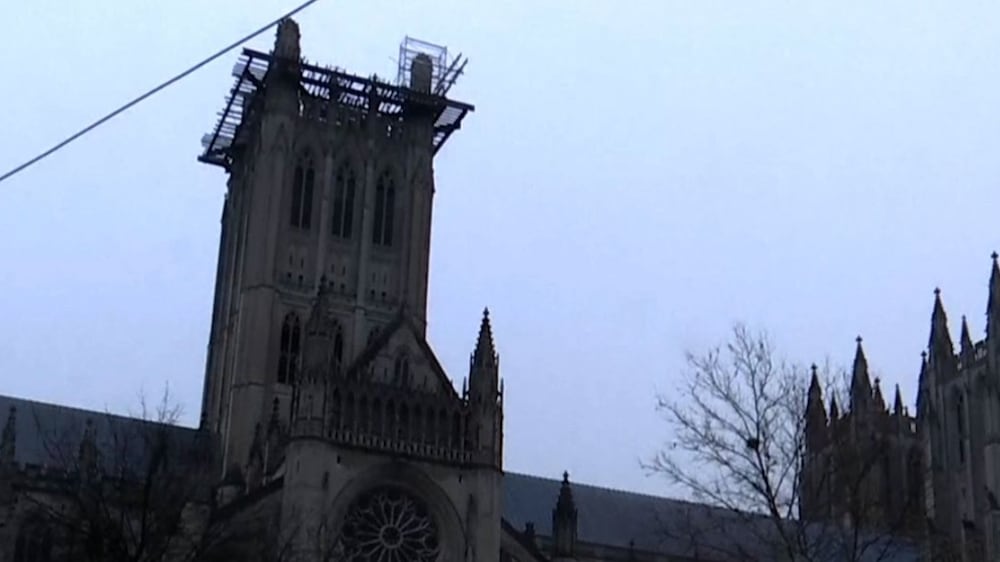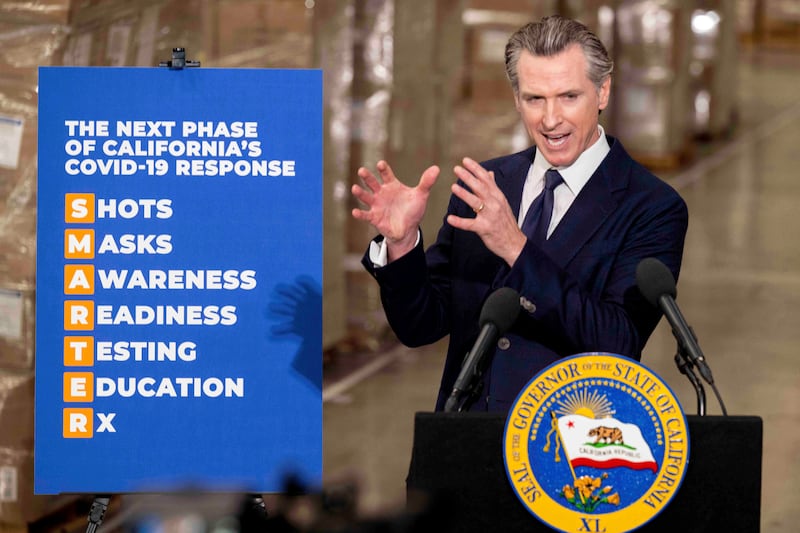California has become the first US state to formally shift to an “endemic” approach to the coronavirus, after Governor Gavin Newsom announced a plan that emphasises prevention and quick reaction to outbreaks over mandated masking and business shutdowns.
The milestone, nearly two years in the making, envisions a return to a more normal existence with the help of a variety of initiatives and billions of dollars in new spending to more quickly spot surges or variants, add healthcare workers, stockpile tests and push back against false claims and other misinformation.
“We are moving past the crisis phase into a phase where we will work to live with this virus,” Mr Newsom said during a news conference from a state warehouse brimming with pandemic supplies in Fontana, east of Los Angeles, on Thursday.
The first-term Democrat, who last year survived a recall election driven by critics of his governance during the pandemic, promised the state’s nearly 40 million residents that as the Omicron surge fades, “we’re going to keep them safe and we’re going to stay on top of this".
A disease reaches the endemic stage when the virus still exists in a community but becomes manageable as immunity builds.
But there will be no definitive turn of the switch, the Democratic governor said, unlike the case with Wednesday’s lifting of the state’s indoor masking requirements or an announcement coming on February 28 of when precisely schoolchildren can stop wearing face coverings.
And there will be no immediate lifting of the dozens of remaining executive emergency orders that have helped run the state since Mr Newsom imposed the nation’s first statewide stay-home order in March 2020.
“This pandemic won’t have a defined end. There’s no finish line,” Mr Newsom said.
Mr Newsom’s plan sets specific goals, such as stockpiling 75 million masks, establishing the infrastructure to provide up to 200,000 vaccinations and 500,000 tests a day in the event of an outbreak, and adding 3,000 medical workers within three weeks in surge areas.
Mr Newsom’s administration came up with a shorthand acronym to capsulise key elements of its new approach: Smarter. The letters stand for Shots, Masks, Awareness, Readiness, Testing, Education and Rx, a reference to improving treatments for Covid-19.
The plan includes increased monitoring of virus remnants in wastewater to watch for the first signs of a surge. Masks won’t be required but will be encouraged in many settings.
If a higher level of the virus is detected, health officials will determine if it is a new variant. If so, state and federal officials have a goal to within 30 days determine if it responds to existing tests, treatments and immunities from vaccines or prior infections.
Washington National Cathedral tolls bell 900 times to mark 900,000 Covid deaths in the US

California’s health secretary, Dr Mark Ghaly, said one of the goals is to avoid business closures and other far-reaching mandates. However, he said the state’s requirement that schoolchildren be vaccinated against coronavirus by autumn remains in effect.
In co-ordination with the federal government, it calls for a first-in-the-nation study of the pandemic’s direct and indirect impacts long-term on both people and communities.
Mr Newsom, who has faced criticism for sometimes failing to follow his own rules, defended keeping in place some of his executive emergency orders, which he said most recently have allowed the state to quickly bring in temporary medical workers and to quickly distribute more than 13 million home test kits to schools.
Those orders have dwindled from 561 to fewer than 100 in recent months, he said, and his administration is working with legislative leaders to eventually make them unnecessary.






